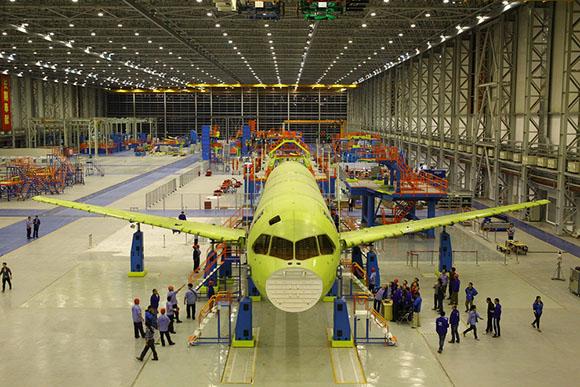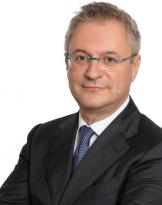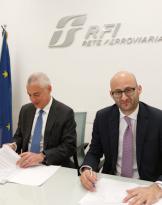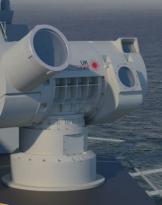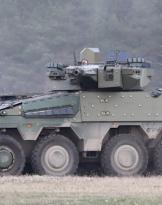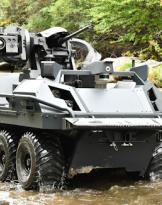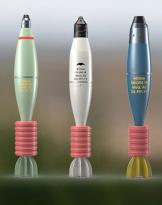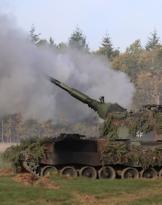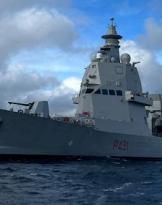Some events constitute a significant synthesis and an effective representation of the historical processes underway, thus highlighting the sign of the times. One of these is certainly the decision announced last September by Boeing to open a factory outside the United States for the first time in its history, in Zhoushan, near Shanghai. The sortie outside the national territory for the aerospace giant constitutes (at least in its intentions) an element characterizing the opening of the Dennis Muilenburg (pictured below) management era, named CEO (Chief Executive Officer) in July.
The announcement was made in conjunction with the visit to the Seattle facilities of Chinese President Xi Jinping who presented himself with a business card represented by an order of 300 aircraft from the companies of the Middle Empire. For the opening of its first plant in China, Boeing has signed an agreement with the state-owned local manufacturer Comac (Commercial Aircraft Corporation of China), born in 2008 in Shanghai to put together the pieces of various companies in the sector. Last November Comac presented its plane for the short and medium-haul routes C-919 with which it plans to carve out its own space in the category - currently dominated by Boeing and Airbus - “narrow body medium size”, or with single corridor for 150-200 passengers.
 Not that collaborative relationships did not exist given that the American giant can boast a forty-year relationship with the Chinese market that began with the first official visit of Nixon in the 1972, but it was always limited to subcontracting relationships by entrusting local manufacturers with the production of components or interior finishes. The choice for a direct commitment on the part of Boeing is based on a scenario of perspective that maintains the positive sign for the aeronautical sector despite doubts and contradictions that have recently affected in particular the "patrol" of emerging countries, an increasingly important component for the world economy, a role that has further accelerated since the 2007 with the triggering of the global financial crisis.
Not that collaborative relationships did not exist given that the American giant can boast a forty-year relationship with the Chinese market that began with the first official visit of Nixon in the 1972, but it was always limited to subcontracting relationships by entrusting local manufacturers with the production of components or interior finishes. The choice for a direct commitment on the part of Boeing is based on a scenario of perspective that maintains the positive sign for the aeronautical sector despite doubts and contradictions that have recently affected in particular the "patrol" of emerging countries, an increasingly important component for the world economy, a role that has further accelerated since the 2007 with the triggering of the global financial crisis.
In fact at present the BRIC group (acronym coined by Goldman Sachs economist Jim O'Neill in the 2001), intended as the leading team that pulled the global growth sprint, hardly exists anymore. Brazil and Russia are in recession, stock market fibrillations and currency tensions continue to affect China which is causing international observers to discuss above all about the real extent of its own slowdown and its repercussions on the world economic cycle against which the baton seems to have passed to India. a major supporter of growth in terms of percentage growth rates. The Indian elephant would be joined in this sense by some African countries such as Ethiopia (94 million inhabitants) which has been recording double-digit growth rates for a decade, after South Africa had been the champion in previous years of the prospects of economic redemption of the black continent, so much so as to add an S to the acronym devised by O'Neill.
For the dragon there remain the unknowns linked to the process of restructuring the economic-industrial and financial apparatus if we consider that according to the 1 / 3 estimates of the Chinese foreign exchange reserves, which are around the 3.000 MLD of $, will have to be used in the reorganization of the banking system burdened by high credit bad debts. The management of this process is part of the "go west" policy which seeks to revive growth through the flywheel of the vast continental hinterland (the so-called "yellow China" according to the definition of Marie-Claire Bergère in her book Sun Yat- sen, of 1994), remained lingered with respect to the development of coastal areas ("Blue China", which goes from Tianjin to Shanghai, from Canton-Guangzhou to Hong Kong).
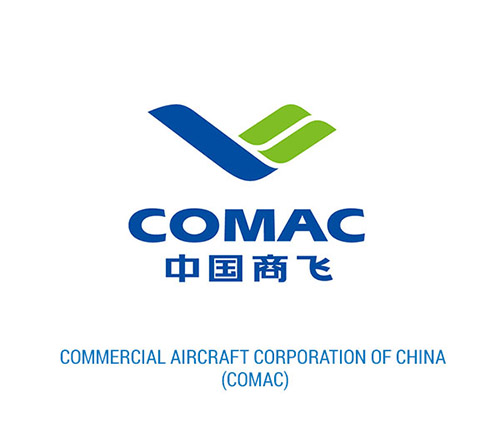
In any case, the Boeing management team estimates that in the coming 20 years, China will order 6.330 aircraft (the 17% of the over 38.000 worldwide, with the entire Asia-Pacific area touching 10.000), for 950 MLD of dollars and for approximately ¾ (73%) will be aircraft for short and medium-range regional transport of the Boeing 737 and Airbus A-320 type. The studies of Airbus agree and from the top of the European group (which previously has already planted their own signs in Tianjin in association with the Chinese company Avic), it is noted that the aircraft manufacturers follow the footsteps of car manufacturers undertaking a process of rooting in the main outlet markets, with the opening of its own plants.
Globalization is proceeding following a dynamic of unequal development and the consequent change in the economic weights in international relations pushes, even with all the peculiarities of the sector, even the large defense groups to adopt an increasingly international dimension. This does not, however, cancel the relationship with the territory of the historical settlement areas and the specificity of the local relations that have been established, without prejudice to an inevitable process of adaptation and transformation.
Precisely starting from the United States, the geographic location of the colossal production facilities of a military-industrial complex constitutes an aspect of great interest, pointing out that procurement and production linked to defense tend to be geographically concentrated rather than dispersed throughout the national territory, although having to take into account, as we will see, an adequate balancing of the distribution of these productive poles.
In the era of information technology, the internet, social networks, videoconferences and the most varied activities performed remotely, the leading sector of technological development - which obviously makes extensive use of all these tools, if only for the fact that in the vast majority of cases it is the environment in which they were born - it provides important examples that enhance proximity relationships in a more or less extensive but still limited territorial area.
 Whether you want to define them as clusters or clusters, even for the American defense industry there is a phenomenon of productive agglomeration in areas that are identified in a definite collective identity, whether this is linked to geographical, economic-industrial, historical or ideological folklore. Characteristic elements that are often mentioned in the names of local sports clubs: Boston Celtics, Detroit Pistons, Dallas Cowboys, Houston Rockets, Miami Dolphins, Seattle Supersonics, New York Yankees etc.
Whether you want to define them as clusters or clusters, even for the American defense industry there is a phenomenon of productive agglomeration in areas that are identified in a definite collective identity, whether this is linked to geographical, economic-industrial, historical or ideological folklore. Characteristic elements that are often mentioned in the names of local sports clubs: Boston Celtics, Detroit Pistons, Dallas Cowboys, Houston Rockets, Miami Dolphins, Seattle Supersonics, New York Yankees etc.
In highlighting the specificity of the territorial settlement model of the defense industry, the term "gunbelt" was used. The emergence of the latter is brought back to the effects of the various waves of restructuring that have in particular invested certain regions or metropolitan areas, certainly also involving companies connected to the defense (without saving as will also see illustrious brands such as Colt and Winchester) which apparently they have held better than the general picture thus increasing their specific weight.
The relationship between the defense industry and the territory proves to be complex, linked to the high technical profile of the production cycle and to the need to be able to count on highly specialized skills of a workforce trained in this sense and on a specific entrepreneurial culture. The continuous pressure for innovation makes it indispensable the presence of factors such as: large university centers and research centers that are at the same time emanation and an element of further attraction in the location of industrial centers with such high innovative intensity.
We must not forget that in the location of the installations of a military-industrial complex the decisions of the States and therefore of the political ruling class on defense budgets and armament policies naturally count. The relationship between politics and localization of economic activities is inevitably a constant because political consensus, organized in electoral districts, is linked to the territory, so facilitating and protecting a specific economic-industrial fabric is a way to create, increase or consolidate one's own electoral base.
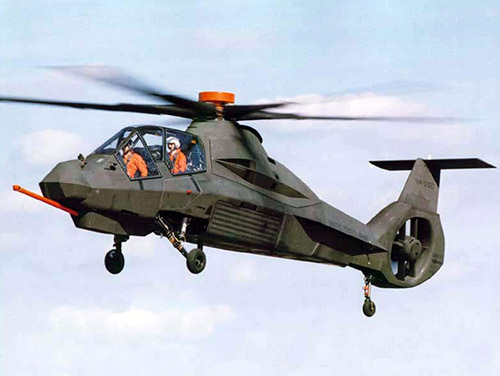 According to ennetienne de Durand during the period of the reform of the Pentagon guidelines under the banner of "jointness" in the first half of the 2000 years, the XM 2002 Crusader and the 2001 mobile artillery system SPH (self-propelled howitzer) was canceled in the 2004 of the armed reconnaissance stealth helicopter and Boeing-Sikorsky RAH-66 attack Comanche (photo on the left), they did not present particular difficulties for the then Secretary of Defense Donald Rumsfeld.
According to ennetienne de Durand during the period of the reform of the Pentagon guidelines under the banner of "jointness" in the first half of the 2000 years, the XM 2002 Crusader and the 2001 mobile artillery system SPH (self-propelled howitzer) was canceled in the 2004 of the armed reconnaissance stealth helicopter and Boeing-Sikorsky RAH-66 attack Comanche (photo on the left), they did not present particular difficulties for the then Secretary of Defense Donald Rumsfeld.
On the one hand the two programs were considered duplicates (moreover luxury, just think of the sophistication driven by the Comanche's equipment), as they are focused on operational capabilities already considered covered by other proven weapon reliability systems, but above all: yes few demonstrated that they were willing to defend themselves in the Congress because of the limited industrial effects on a limited number of states ("Interarmées aux atstats-Unis. Rivalités bureaucratiques, enjeux opérationnels et idéologie de la jointness", IFRI November 2007 ).
Coming to an example that concerns us more closely, at the beginning of 2005 Agusta-Westland, a participant in an industrial team led by Lockheed-Martin, had acquired a contract relating to the program then called VH-71 (derived from the EH / AW -101 - photo below on the right), for the supply of the US helicopter intended for presidential transport. In the first months of the 2009, the Democratic deputy Rosa De Lauro made the request to revise the program, challenging the Nunn-McCurdy legislation concerning programs whose costs exceed the budget by more than 25%.
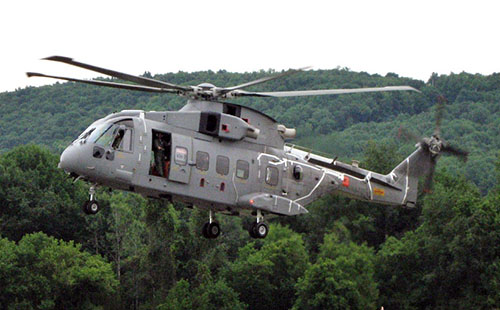 The request was founded as the costs had risen from the 6 MLD of $ initially planned to almost touch the 13 MLD, which implied the need for a congressional re-approval. Despite the declarations of the industrial partners and the admissions coming from the same military areas according to which the increase in costs was due to the numerous requests made by the client during the program (50 to make significant changes and beyond 800 for minor changes), it was decided to "terminate" the latter after supplying the first 9 machines, 4 test vehicles (prototypes) and 5 pilot production (pre-series).
The request was founded as the costs had risen from the 6 MLD of $ initially planned to almost touch the 13 MLD, which implied the need for a congressional re-approval. Despite the declarations of the industrial partners and the admissions coming from the same military areas according to which the increase in costs was due to the numerous requests made by the client during the program (50 to make significant changes and beyond 800 for minor changes), it was decided to "terminate" the latter after supplying the first 9 machines, 4 test vehicles (prototypes) and 5 pilot production (pre-series).
This provision has given new impetus to the activities of the lobbies that were pushing for the re-assignment of the contract to Sikorsky, formerly US Navy and Marines supplier of H-3 helicopters used in presidential transport, such as the VH-3D line operated by the HMX-1 , the Marines department engaged in transporting the White House tenant. Sikorsky and his parent company at the time United Technologies have their headquarters in Connecticut, where the electoral district of Rosa De Lauro is also located. The combative democratic exponent is known for its battles for civil rights, for the protection of the environment and for the control of weapons, especially those that are not enough "made in the USA".
In his first statements regarding the opening of the Zhoushan factory, Dennis Muilenburg, who knows the history of Boeing well, stressed that: the agreement with our Chinese partners will not result in the 737 program in layoffs and suppression of places in the State of Washington (Véronique Guillermard, En ouvrant un usine en Chine, le géant américain brise a tabou, Le Figaro, 24 September 2015).
The declarations of the CEO of Boeing must certainly be read in the sense of defusing a potential opposition on the part of the combative unions in the sector, with particular regard to the local section of the International Association of Machinists and Aerospace Workers, which has not frowned upon the decision of the group to open a second assembly line for the 2009 Dreamliner in North Carolina in the 787, which reveals an attitude not exactly in line with the adjective "International" in the association's name.
If an operation inside the US puts the exponents of this union into turmoil, it is not difficult to imagine the reaction to the announcement of the "leap forward" towards the Middle Empire. At the same time, Muilenburg's desire to reassure elected deputies and senators in the districts where the Chicago-Seattle constructor's facilities are present is evident.
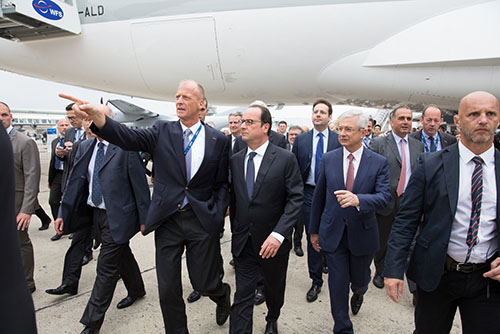 This policy offers the opportunity to reflect on the fact that even an expansion process can create frictions in the activity of a company but for obvious reasons it is the restructuring plans that generate the greatest contrasts, and this does not only concern the counterpart trade union. The clash over the sharing of the social costs of a restructuring can open internal fault lines to a company, especially when it comes to a large group with a plurality of production centers located in a continental reference hinterland.
This policy offers the opportunity to reflect on the fact that even an expansion process can create frictions in the activity of a company but for obvious reasons it is the restructuring plans that generate the greatest contrasts, and this does not only concern the counterpart trade union. The clash over the sharing of the social costs of a restructuring can open internal fault lines to a company, especially when it comes to a large group with a plurality of production centers located in a continental reference hinterland.
If this is true for the US it is not surprising that in Europe the internal frictions of the parent company of Airbus, EADS, have constituted a constant problem absorbing part of the directional energies, conditioned in their action by the need to safeguard the internal balances.
Particular emphasis has always been placed on the Franco-German contrasts regarding the distribution of the weight of the restructuring plans, involving the partnership between two countries which are not only the main "reference shareholders" of EADS, but also the pillars of that axis that covers the role of pivot of European unification.
Even Airbus has had its work to do in reconciling its international expansion with the local instances of the various areas of European settlement. The first steps of cooperation with China date back to the era of Jean Pierson, chairman of the group from 1985 to 1998, but the turning point is represented by the second half of the 2000 years with the construction of the Tianjin production site in association with the Chinese Avic for the assembly of the A-320. Initially the weight of the European manufacturer in the Chinese market approached 20%, about a decade later the balance of power with Boeing was balanced with a division at 50%.
In the program there is a further strengthening of the collaboration with the opening of a center - whose actual entry into service is scheduled for the end of the 2017 - for quality control and final assembly for the A-330 of which China ordered 75 specimens for 18 MLD of $ last July.
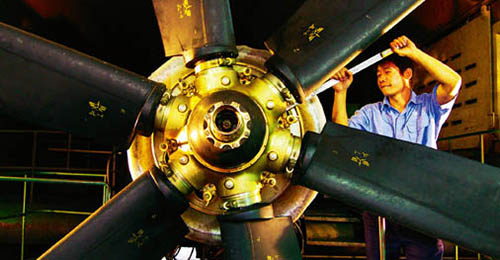
The leaders of the group have shown themselves to be attentive to the impact that these movements can exert on their European background, circulating a document relating to a study aimed at demonstrating that for every job created in China a workload would be generated for even 3 European plant workers, as the Chinese assemble aircraft parts built in Europe.
Meanwhile, the management of Airbus aims at the Mobile plant in Alabama, officially inaugurated last September 14, where the A-320 are assembled, in order to aspire to conquer a share equal to 50% of the American market which would amount to more than double the current 20%. A Mobile Airbus has already hired 260 people and with the plant becoming fully operational, which should take place in the 2018, it will reach 1000 with a monthly production rate of 4 A-320 bringing the group's total to 63 aircraft per month .
Businesses are not closed systems but continuously interact with a surrounding environment that is composed in the first instance of local factors and elements that gradually present traits of a more global sign up to affect the dynamics of international relations: one of these is represented by the relationships monetary powers.
The entry of the European single currency between January and March of the 2002 represented an important element of novelty on the international scene, starting obviously from the EU and in particular from the euro area (of which 19 countries are currently part), where there is no enterprise, from the shop under the house to the large international group, which directly or indirectly does not have to "deal" with exchange rates and with the value of the new reference currency.
The currency in which the financial statements of a company are expressed is an important factor in the struggle for competition, influencing its economic soundness and capacity for commercial penetration. This is all the more true for an international Airbus group for which monetary exchange rates also play a role in decisions concerning the location of facilities.
In the summer of 2008 the top management of EADS, to which Airbus belongs, evaluated the possibility of having to deal with an exchange rate fluctuating around the average of 2010 dollars per euro from 1,5 onwards. Such a strong currency was a problem as European defense firms have an accounting system that records costs in euros and revenues in dollars. The then president of EADS Louis Gallois, who took office in 2006, gave the line: it will be necessary to increase the part of production and purchases made in dollars (Giampiero Martinetti, Più America in Airbus, the final bet of the "Carthusian" Gallois, Affari & Finance, 09 June 2008).
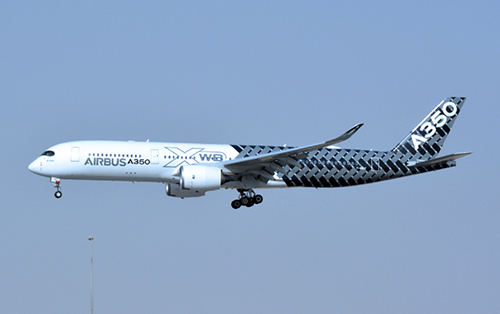 In other words, this meant landing in the USA with its own factories and relying more heavily on the network of star and strip suppliers for components. With this in mind Aerospace Dynamics International, at the end of the 2013 began work on the construction of the Santa Clarita production site near Los Angeles. The Californian company has thus equipped itself to increase the production of parts of the A-350 XWB.
In other words, this meant landing in the USA with its own factories and relying more heavily on the network of star and strip suppliers for components. With this in mind Aerospace Dynamics International, at the end of the 2013 began work on the construction of the Santa Clarita production site near Los Angeles. The Californian company has thus equipped itself to increase the production of parts of the A-350 XWB.
To date, the change between the two currencies in question has returned to parity, reaching around 1,1 dollars per euro and the relative strengthening of the greenback favors the European constructor based on the double currency regime of its general accounting. So a direct investment in the USA also takes on the meaning of being sheltered from the exchange rate risk or in any case of positioning itself to better deal with it, without prejudice to the more directly productive relief of the various aspects that have been recalled: high local professionalism, repercussions in terms of jobs and agreements with local producers that facilitate the collaborative arrangement of political authorities, etc.
For the United States the term "belt" has historically been used to describe a kind of geoeconomic specialization, combining it with the particular local production declination. Thus the "cotton belt" comprised the states of the south-east including Texas, Louisiana, Mississippi, Alabama, Georgia, etc. The corn belt extends between Nebraska, Iowa, Illinois, Indiana, Ohio; the sun belt runs from Florida across the South to California.
As will be seen in all these areas, in the various passages that have characterized the economic and industrial development of the United States, production chains have been established that have led to talking about real "gun belts", from the light weapons district of the Northeast to South and West Coast aerospace centers.

